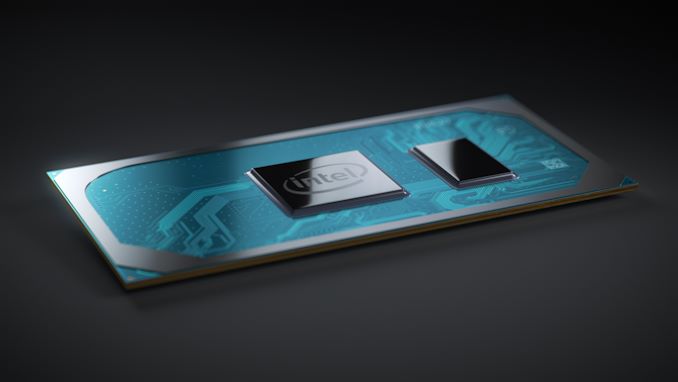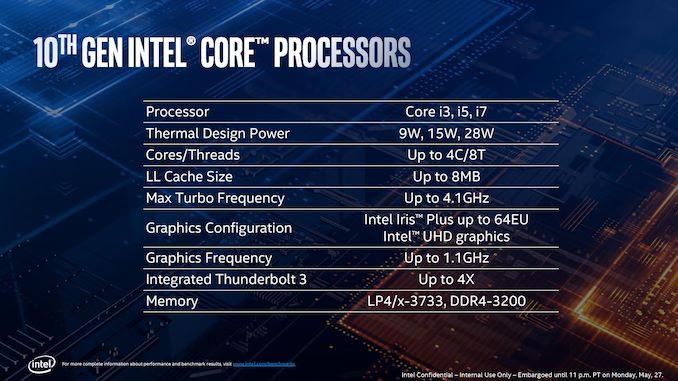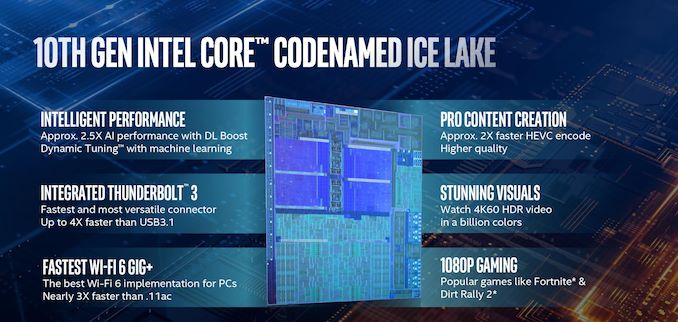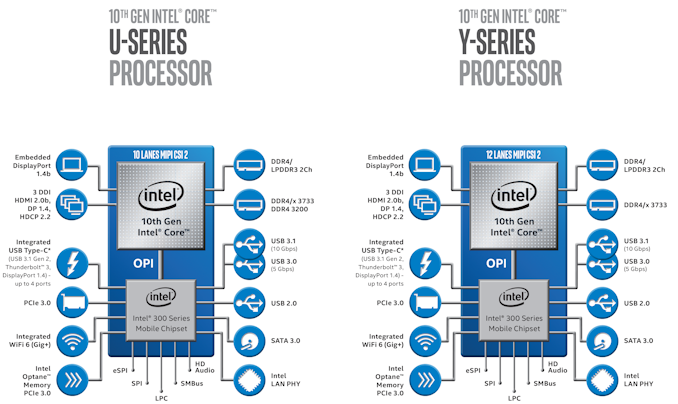Intel Begins Commercial Shipments of 10nm Ice Lake CPUs to OEMs
by Anton Shilov on July 26, 2019 5:30 PM EST
Intel has begun shipments of its 10th generation Core "Ice Lake" processors as of the second quarter, according to the company in an earnings call this week. Made using Intel’s 10nm process technology, these laptop CPUs were qualified by OEMs earlier in 2019 and are on track to reach the market inside mobile PCs by the holiday season.
As reported, Intel began to produce Ice Lake processors in the first quarter in a bid to build up inventory to support a high-volume launch in the second half of the year. The processors passed qualification by PC makers in Q1 – Q2, and then Intel started to ship them for revenue later in the quarter, which was a little bit earlier than anticipated by various market observers. Keeping in mind the lead-time required to get assembled PCs on to store shelves, Ice Lake-powered PCs are well on track to hit the market in Q4 with some machines possibly reaching retailers earlier than that.
Bob Swan, CEO of Intel, stated the following:
- “We began shipping Ice Lake client [CPUs] in the second quarter supporting systems on the shelf for the holiday selling season.”
Intel formally introduced its laptop-focused Ice Lake-U and Ice Lake-Y CPUs, which are based on the Sunny Cove microarchitecture, in late May. Officially called ‘Intel 10th Generation Core’ processors, the family includes 11 chips (ranging from Core i3 to Core i7) featuring two or four general-purpose CPU cores as well as various GPU configurations and coming to market with 9W, 15W, and 28W TDP variants.
On the CPU side of things, Intel promises an average 18% raw clock-for-clock performance uplift compared to the Skylake core released in 2016 (which has been used with small tweaks since then) along with VNNI and Cryptographic ISA instructions. On the GPU side of matters, Ice Lake CPUs will integrate Intel’s Gen11 graphics core with up to 64 execution units, with Intel promising significant performance improvements as well. The updated iGPU will also natively support DisplayPort 1.4 and HDMI 2.0b outputs as well as HDCP 2.2 technology.
As is traditional for Intel’s lower-power mobile parts, the new Ice Lake processors will come with on-package chipsets. The new 300-series chipsets for ICL will natively support USB 3.1 Gen 2, Wi-Fi 6 MAC (RF module will be sold separately), PCIe 3.0, and other features.
Overall, Intel’s road to high-volume production of 10nm CPUs has been long and bumpy; but it looks like the company is finally turning a corner in time for their Q4 launch.
Related Reading:
- Intel Unveils 10th Gen Core Ice Lake-U & Ice Lake-Y Mobile CPUs: 10nm Sunny Cove Later This Year
- Intel Starts Qualification of Ice Lake CPUs, Raises 10nm Volume Expectation for 2019
- Intel Teases Ice Lake-U Integrated Graphics Performance
Source: Intel













115 Comments
View All Comments
Rudde - Saturday, July 27, 2019 - link
Ice lake server is set for 2020 on Intel roadmaps. I don't know about core counts though, as they also have Cooper lake for 2020.johannesburgel - Friday, July 26, 2019 - link
According to everything I've heard, Intel's 10nm process has the following issues:- The new metals they're using (Cobalt etc.) have different thermal expansion coefficients, putting more thermal strain on the chip.
- Cobalt has a much lower thermal conductivity than Copper, basically acting as an insulator, so hot spots inside the chip become even hotter. This puts even more strain on the chip and doesn't allow high clock speeds.
- Cobalt is brittle and doesn't handle strain as well as copper.
This means the 10nm chips are much more likely to die from thermal fatigue than their 14nm models. Which is probably why they are having yield issues - the chips are working when they come off the production line, but most of them would die too early in the hands of customers.
I'll stick with AMD while other people are playing guinea pigs for Intel's 10nm.
NirXY - Sunday, July 28, 2019 - link
first.. they are using cobalt interconnects instead of tungsten.secondly, cobalt is the standard the entire semi-conductor industry will eventually switch to, in order to lower the contact resistance and reduce thermals.
Gondalf - Monday, July 29, 2019 - link
Umm yes you are absolutely right. Officially Samsung too is going with Cobalto to increase performance, same applies to TSMC.IMO the 10nm "issue" is only related to yields not to absolute clock speed.
If you consider actual TSMC painful situation, you can realize that right now they are unable to
manufacture in volume a large die in 7nm, they can give only a very low volume output with some overheat around. If you look at the 7nm process it is limited on clock speeds, virtually unable to overclock and pretty hot at the silicon level under load.
The real test on TSMC 7nm is Nvidia, but all journalits are silent about this bashing instead Intel all around. In a recent statement Nvidia said that 14/12nm is a better choice for the Company.
Nvidia said that 7nm is too expensive to sustain and for now they will stay on 12nm more like is doing Intel (this is a July 2019 thing)
I'm asking to myself what is the real AMD net profit over Ryzen 3000 line, expecially over the large footprint 12 and 16 cores SKUs. Considering the likely less than 50% yields level of these high turbo dies, they have to pay two to have one or four to have two good enough. Not to mention the very high packaging costs to assemble three dies with fast data links on the same substrate.
The situation is far different from the stellar 90/95% yields level of 14nm or 12nm.
joconor - Friday, July 26, 2019 - link
Still no LPDDR4?!?!smilingcrow - Friday, July 26, 2019 - link
The slide suggests it is supported as do other reports and up to 3,733.repoman27 - Friday, July 26, 2019 - link
Yeah, LPDDR4/LPDDR4X-3733 are supported. The slides are a little wonky in how they list that, but it’s pretty clear if you read the product brief: https://www.intel.com/content/www/us/en/products/d...name99 - Saturday, July 27, 2019 - link
Of course DDR5 is now shipping, and the 2019H2 high-end phones will probably be using LPDDR5.So, yeah, once again awesome forward planning Intel! Proudly shipping yesterday’s specs tomorrow.
Jorgp2 - Saturday, July 27, 2019 - link
As opposed to AMD supporting Ddr4 2400?name99 - Saturday, July 27, 2019 - link
They’re both dinosaurs.